
On 4 July 1862, that Dodgson invented the outline of the story that eventually became his first and largest commercial success. Having told the story and been begged by Alice Liddell to write it down, Dodgson eventually (after much delay) presented her with a handwritten, illustrated manuscript entitled Alice's Adventures Under Ground in November 1864. After the possible alternative titles Alice Among the Fairies and Alice's Golden Hour were rejected, the work was finally published as Alice's Adventures in Wonderland in 1865 under the Lewis Carroll pen-name, which Dodgson had first used some nine years earlier.[26]
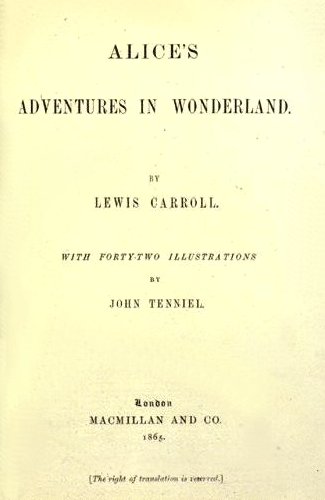

Charles Lutwidge Dodgson (27 January 1832 – 14 January 1898), better known by the pen name Lewis Carroll , was an English writer, mathematician, logician, Anglican deacon and photographer. His most famous writings are Alice's Adventures in Wonderland and its sequel Through the Looking-Glass, as well as the poems "The Hunting of the Snark" and "Jabberwocky", all examples of the genre of literary nonsense. He is noted for his facility at word play, logic, and fantasy, and there are societies in many parts of the world (including the United Kingdom, Japan, the United States, and New Zealand[3]) dedicated to the enjoyment and promotion of his works and the investigation of his life.


Antecedents
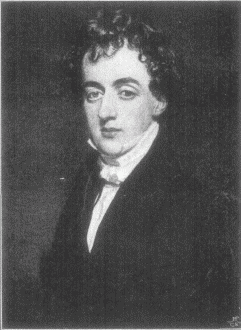
Dodgson's family was predominantly northern English, with Irish connections. Conservative and High Church Anglican, most of Dodgson's ancestors were army officers or Church of England clergy. His great-grandfather, also named Charles Dodgson, had risen through the ranks of the church to become the Bishop of Elphin.[4] His grandfather, another Charles, had been an army captain, killed in action in Ireland in 1803 when his two sons were hardly more than babies.[5] His mother's name was Frances Jane Lutwidge.[6]
The elder of these sons – yet another Charles Dodgson – was Carroll's father. He reverted to the other family tradition and took holy orders. He went to Westminster School, and then to Christ Church, Oxford. He was mathematically gifted and won a double first degree, which could have been the prelude to a brilliant academic career. Instead he married his first cousin in 1827 and became a country parson.[7]
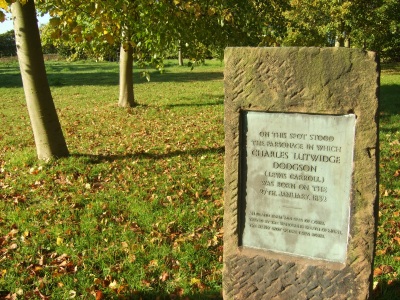
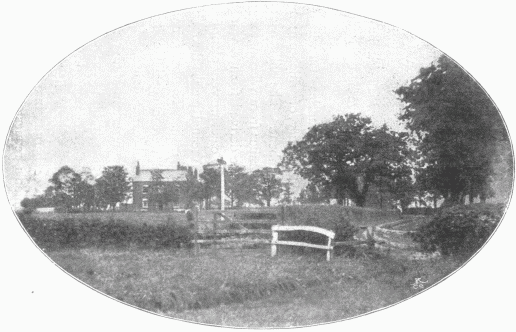
Dodgson was born in the little parsonage of Daresbury in Cheshire near the towns of Warrington and Runcorn,[8] the eldest boy but already the third child of the four-and-a-half-year-old marriage. Eight more children were to follow. When Charles was 11, his father was given the living of Croft-on-Tees in North Yorkshire, and the whole family moved to the spacious rectory. This remained their home for the next twenty-five years.

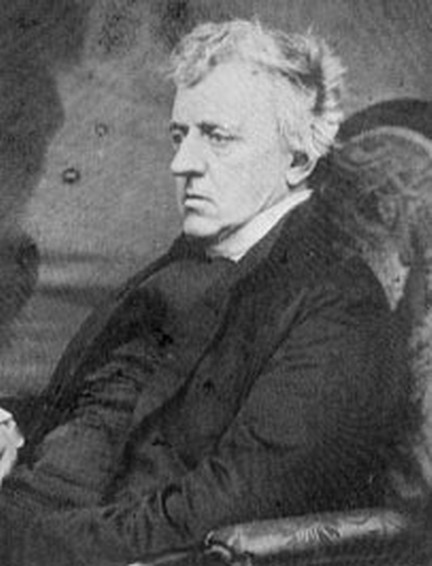
Young Charles' father was an active and highly conservative cleric of the Church of England who later became the Archdeacon of Richmond[9] and involved himself, sometimes influentially, in the intense religious disputes that were dividing the church. He was High Church, inclining to Anglo-Catholicism, an admirer of John Henry Newman and the Tractarian movement, and did his best to instill such views in his children. Young Charles was to develop an ambiguous relationship with his father's values and with the Church of England as a whole.[10]
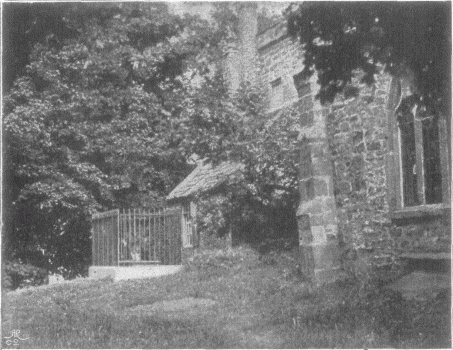
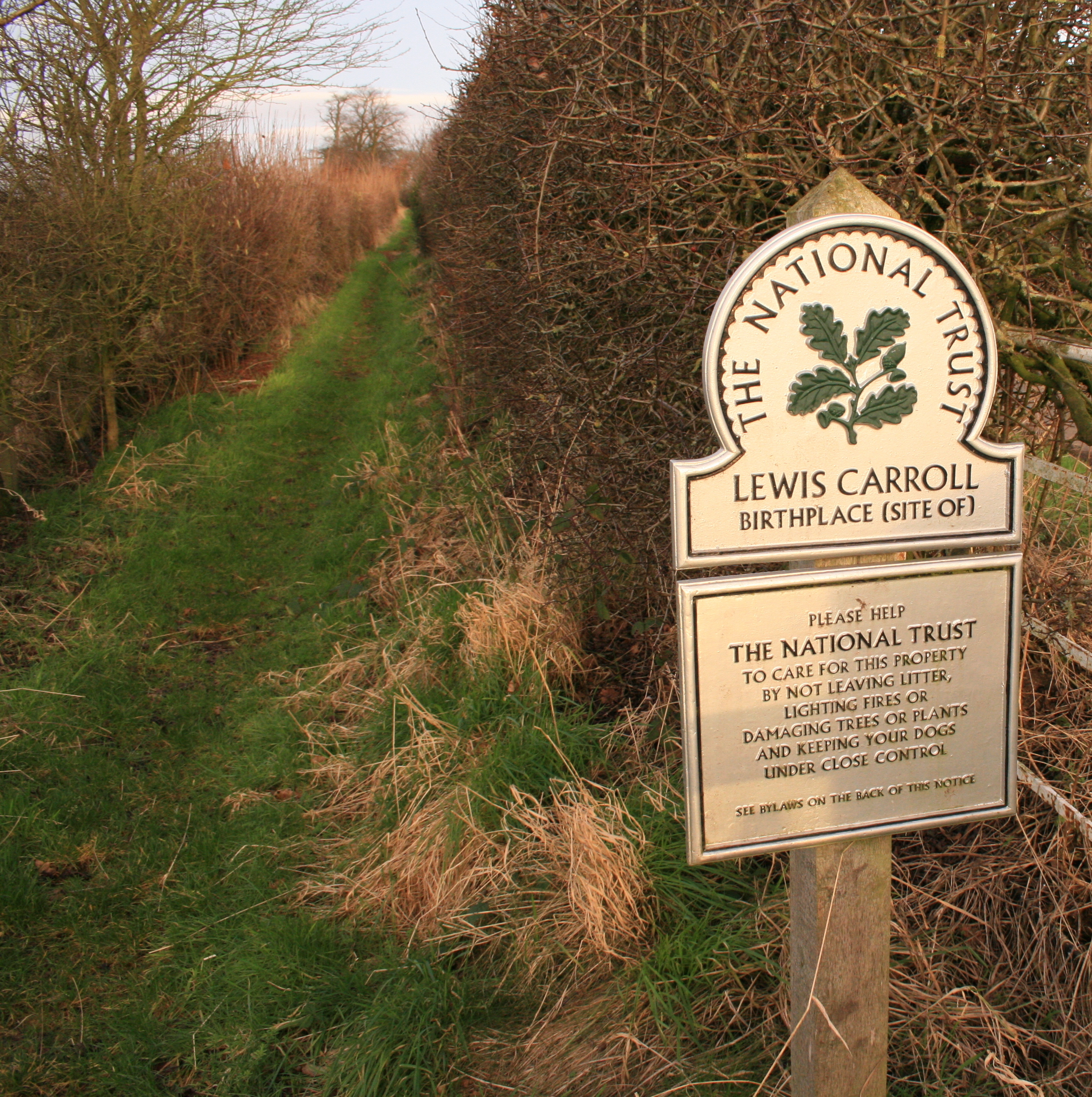
Education
Home life

During his early youth, Dodgson was educated at home. His "reading lists" preserved in the family archives testify to a precocious intellect: at the age of seven the child was reading The Pilgrim's Progress. He also suffered from a stammer – a condition shared by most of his siblings[11] – that often influenced his social life throughout his years. At age twelve he was sent to Richmond Grammar School (now part of Richmond School) at nearby Richmond.
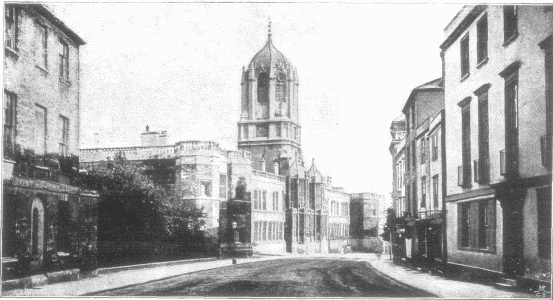
Rugby

In 1846, young Dodgson moved on to Rugby School, where he was evidently less happy, for as he wrote some years after leaving the place:
I cannot say ... that any earthly considerations would induce me to go through my three years again ... I can honestly say that if I could have been ... secure from annoyance at night, the hardships of the daily life would have been comparative trifles to bear.[12]
Scholastically, though, he excelled with apparent ease. "I have not had a more promising boy at his age since I came to Rugby", observed R. B. Mayor, then Mathematics master.[13]
Oxford

He left Rugby at the end of 1849 and matriculated at Oxford in May 1850 as a member of his father's old college, Christ Church.[14] After waiting for rooms in college to become available, he went into residence in January 1851.[15] He had been at Oxford only two days when he received a summons home. His mother had died of "inflammation of the brain" – perhaps meningitis or a stroke – at the age of forty-seven.[15]
His early academic career veered between high promise and irresistible distraction. He did not always work hard, but was exceptionally gifted and achievement came easily to him. In 1852 he obtained first-class honours in Mathematics Moderations, and was shortly thereafter nominated to a Studentship by his father's old friend, Canon Edward Pusey.[16][17]

In 1854 he obtained first-class honours in the Final Honours School of Mathematics, graduating Bachelor of Arts.[18] He remained at Christ Church studying and teaching, but the next year he failed an important scholarship through his self-confessed inability to apply himself to study.[19][20] Even so, his talent as a mathematician won him the Christ Church Mathematical Lectureship in 1855,[21] which he continued to hold for the next twenty-six years.[22] Despite early unhappiness, Dodgson was to remain at Christ Church, in various capacities, until his death.[23]
Character and appearance
Health challenges
The young adult Charles Dodgson was about six feet tall, slender, and had curling brown hair and blue or grey eyes (depending on the account). He was described in later life as somewhat asymmetrical, and as carrying himself rather stiffly and awkwardly, though this may be on account of a knee injury sustained in middle age. As a very young child, he suffered a fever that left him deaf in one ear. At the age of 17, he suffered a severe attack of whooping cough, which was probably responsible for his chronically weak chest in later life. Another defect he carried into adulthood was what he referred to as his "hesitation", a stammer he acquired in early childhood and which plagued him throughout his life.[24]
The stammer has always been a potent part of the conceptions of Dodgson; it is part of the belief that he stammered only in adult company and was free and fluent with children, but there is no evidence to support this idea.[25] Many children of his acquaintance remembered the stammer while many adults failed to notice it. Dodgson himself seems to have been far more acutely aware of it than most people he met; it is said he caricatured himself as the Dodo in Alice's Adventures in Wonderland, referring to his difficulty in pronouncing his last name, but this is one of the many "facts" often-repeated, for which no first-hand evidence remains. He did indeed refer to himself as the dodo, but that this reference was to his stammer is simply speculation.[23]
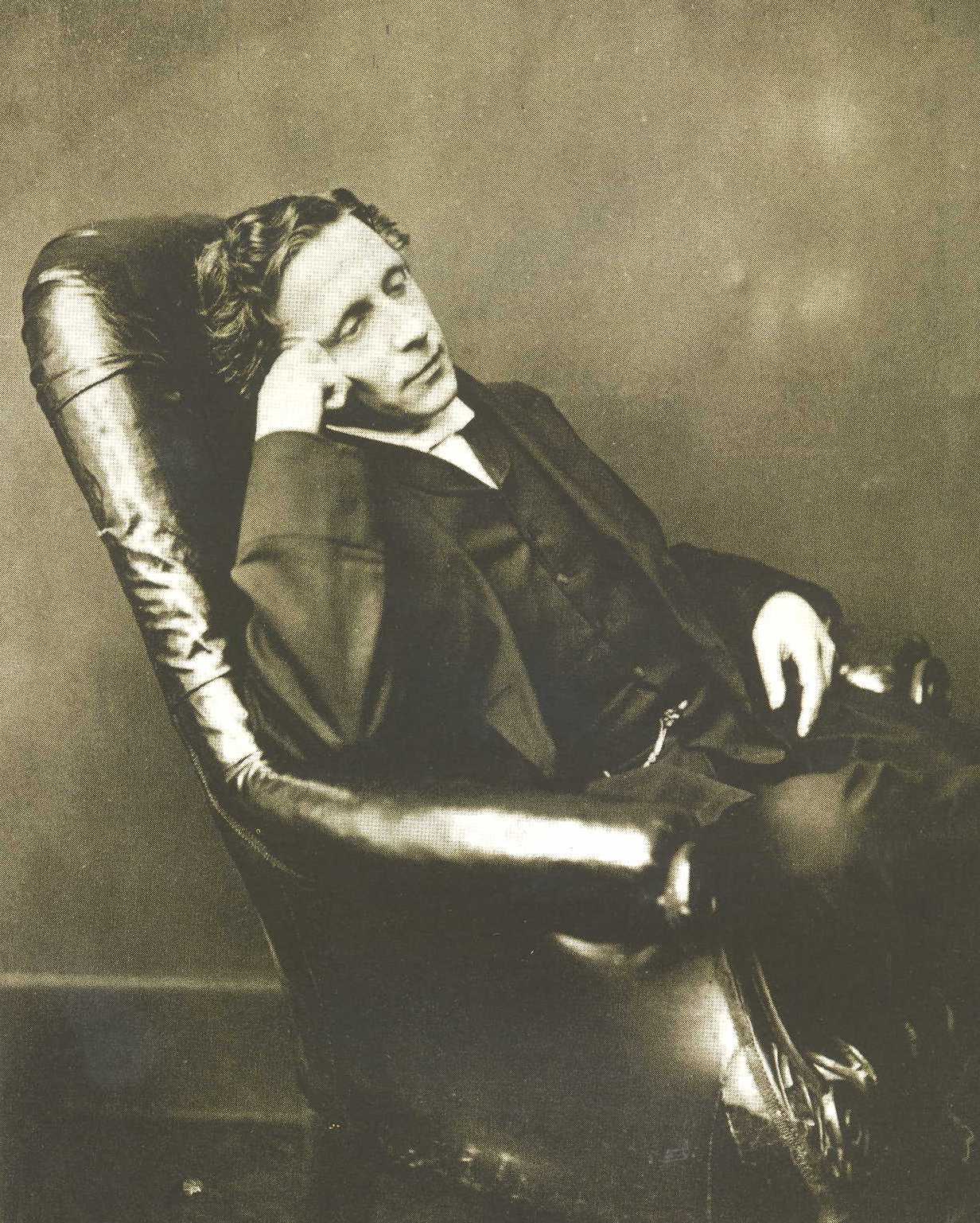
Although Dodgson's stammer troubled him, it was never so debilitating that it prevented him from applying his other personal qualities to do well in society. At a time when people commonly devised their own amusements and when singing and recitation were required social skills, the young Dodgson was well equipped to be an engaging entertainer. He reportedly could sing tolerably well and was not afraid to do so before an audience. He was adept at mimicry and storytelling, and was reputedly quite good at charades.[24]
Social connections


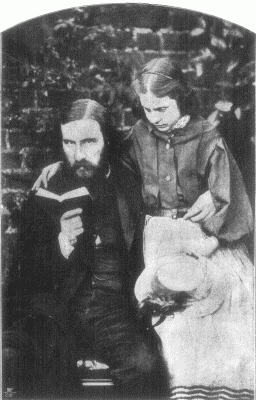

Politics, religion and philosophy

In broad terms, Dodgson has traditionally been regarded as politically, religiously, and personally conservative. Martin Gardner labels Dodgson as a Tory who was "awed by lords and inclined to be snobbish towards inferiors."[27] The Reverend W. Tuckwell, in his Reminiscences of Oxford (1900), regarded him as "austere, shy, precise, absorbed in mathematical reverie, watchfully tenacious of his dignity, stiffly conservative in political, theological, social theory, his life mapped out in squares like Alice's landscape."[28] However, Dodgson also expressed interest in philosophies and religions that seem at odds with this assessment. For example, he was a founding member of the Society for Psychical Research.[29][30] It has been argued by the proponents of the 'Carroll Myth' that these factors require a reconsideration of Gardner's diagnosis, and that perhaps, Dodgson's true outlook was more complex than previously believed (see 'the Carroll Myth' below).[citation needed]
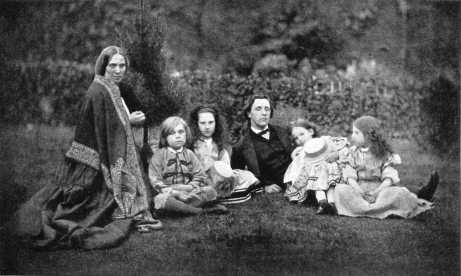
Dodgson wrote some studies of various philosophical arguments. In 1895, he developed a philosophical regressus-argument on deductive reasoning in his article "What the Tortoise Said to Achilles", which appeared in one of the early volumes of the philosophical journal Mind. The article was reprinted in the same journal a hundred years later, in 1995, with a subsequent article by Simon Blackburn titled Practical Tortoise Raising.[31]
Artistic activities
Literature

From a young age, Dodgson wrote poetry and short stories, both contributing heavily to the family magazine Mischmasch and later sending them to various magazines, enjoying moderate success. Between 1854 and 1856, his work appeared in the national publications, The Comic Times and The Train, as well as smaller magazines like the Whitby Gazette and the Oxford Critic. Most of this output was humorous, sometimes satirical, but his standards and ambitions were exacting. "I do not think I have yet written anything worthy of real publication (in which I do not include the Whitby Gazette or the Oxonian Advertiser), but I do not despair of doing so some day," he wrote in July 1855.[24] Sometime after 1850, he did write puppet plays for his siblings' entertainment, of which one has survived, La Guida di Bragia.[32]

In 1856 he published his first piece of work under the name that would make him famous. A romantic poem called "Solitude" appeared in The Train under the authorship of "Lewis Carroll". This pseudonym was a play on his real name; Lewis was the anglicised form of Ludovicus, which was the Latin for Lutwidge, and Carroll an Irish surname similar to the Latin name Carolus, from which comes the name Charles.[7] The transition went as follows: "Charles Lutwidge" translated into Latin as "Carolus Ludovicus". This was then translated back into English as "Carroll Lewis" and then reversed to make "Lewis Carroll".[citation needed]
Alice books
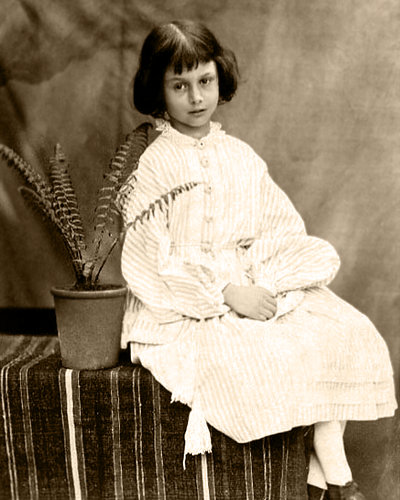


In the same year, 1856, a new dean, Henry Liddell, arrived at Christ Church, bringing with him his young family, all of whom would figure largely in Dodgson's life and, over the following years, greatly influence his writing career. Dodgson became close friends with Liddell's wife, Lorina, and their children, particularly the three sisters: Lorina, Edith and Alice Liddell.
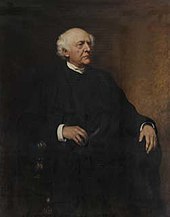

Gertrude Chataway's name appears in this form at the beginning of The Hunting of the Snark and it is not suggested that this means any of the characters in the narrative are based on her.[34]

Though information is scarce (Dodgson's diaries for the years 1858–1862 are missing), it does seem clear that his friendship with the Liddell family was an important part of his life in the late 1850s and he grew into the habit of taking the children (first the boy, Harry, and later the three girls) on rowing trips accompanied by an adult friend.[35] to nearby Nuneham Courtenay or Godstow.[36]

It was on one such expedition, on 4 July 1862, that Dodgson invented the outline of the story that eventually became his first and largest commercial success. Having told the story and been begged by Alice Liddell to write it down, Dodgson eventually (after much delay) presented her with a handwritten, illustrated manuscript entitled Alice's Adventures Under Ground in November 1864.[36]

Before this, the family of friend and mentor George MacDonald read Dodgson's incomplete manuscript, and the enthusiasm of the MacDonald children encouraged Dodgson to seek publication. In 1863, he had taken the unfinished manuscript to Macmillan the publisher, who liked it immediately. After the possible alternative titles Alice Among the Fairies and Alice's Golden Hour were rejected, the work was finally published as Alice's Adventures in Wonderland in 1865 under the Lewis Carroll pen-name, which Dodgson had first used some nine years earlier.[26] The illustrations this time were by Sir John Tenniel; Dodgson evidently thought that a published book would need the skills of a professional artist.
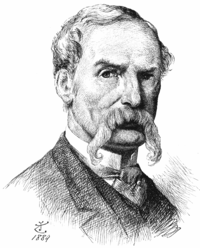
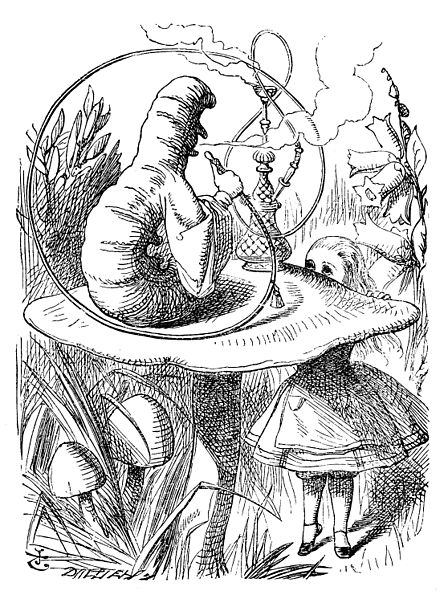
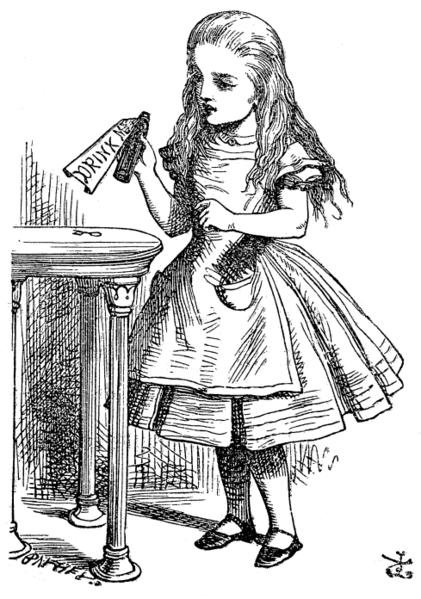
Dodgson himself vehemently denied this story, commenting "...It is utterly false in every particular: nothing even resembling it has occurred";[38][39] and it is unlikely for other reasons: as T.B. Strong comments in a Times article, "It would have been clean contrary to all his practice to identify [the] author of Alice with the author of his mathematical works".[40][41] He also began earning quite substantial sums of money but continued with his seemingly disliked post at Christ Church.[26]
Late in 1871, a sequel – Through the Looking-Glass and What Alice Found There – was published. (The title page of the first edition erroneously gives "1872" as the date of publication.[42]) Its somewhat darker mood possibly reflects the changes in Dodgson's life. His father had recently died (1868), plunging him into a depression that lasted some years.[26]
The Hunting of the Snark
In 1876, Dodgson produced his last great work, The Hunting of the Snark, a fantastical "nonsense" poem, exploring the adventures of a bizarre crew of tradesmen, and one beaver, who set off to find the eponymous creature. The painter Dante Gabriel Rossetti reputedly became convinced the poem was about him.[26]
Photography
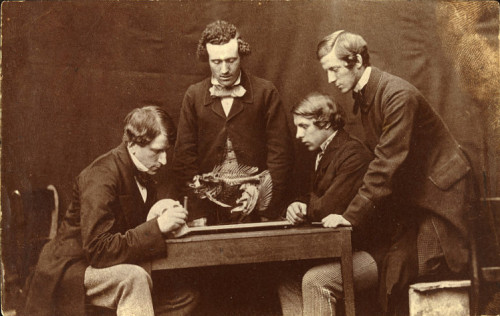
In 1856, Dodgson took up the new art form of photography, first under the influence of his uncle Skeffington Lutwidge, and later his Oxford friend Reginald Southey.[43]
He soon excelled at the art and became a well-known
gentleman-photographer, and he seems even to have toyed with the idea of
making a living out of it in his very early years.[26]

A recent study by Roger Taylor and Edward Wakeling[44] exhaustively lists every surviving print, and Taylor calculates that just over fifty percent of his surviving work depicts young girls, though this may be a highly distorted figure as approximately 60% of his original photographic portfolio is now missing, so any firm conclusions are difficult.[citation needed] Dodgson also made many studies of men, women, male children and landscapes; his subjects also include skeletons, dolls, dogs, statues and paintings, and trees. His pictures of children were taken with a parent in attendance and many of the pictures were taken in the Liddell garden, because natural sunlight was required for good exposures.[35]
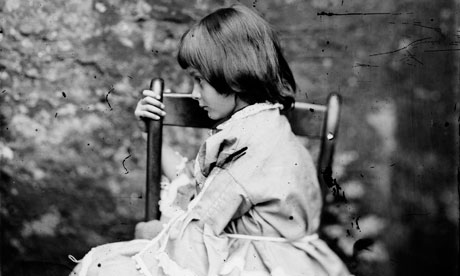
He also found photography to be a useful entrée into higher social circles. During the most productive part of his career, he made portraits of notable sitters such as John Everett Millais, Ellen Terry, Dante Gabriel Rossetti, Julia Margaret Cameron, Michael Faraday and Alfred, Lord Tennyson.[26]
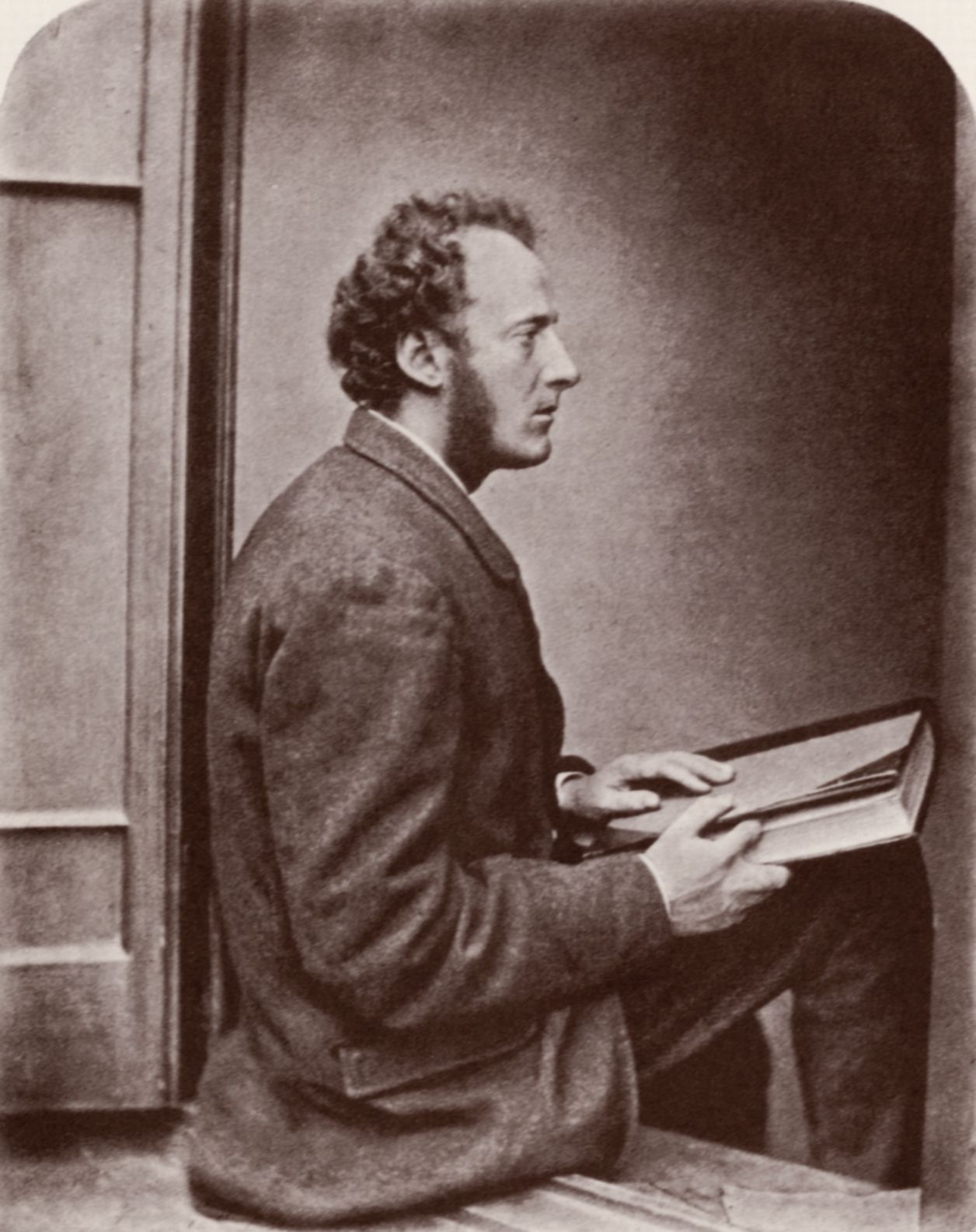
Dodgson abruptly ceased photography in 1880. Over 24 years, he had completely mastered the medium, set up his own studio on the roof of Tom Quad, and created around 3,000 images. Fewer than 1,000 have survived time and deliberate destruction. He reported that he stopped taking photographs because keeping his studio working was difficult (he used the wet collodion process) and commercial photographers (who started using the dry-plate process in the 1870s) took pictures more quickly. [45]
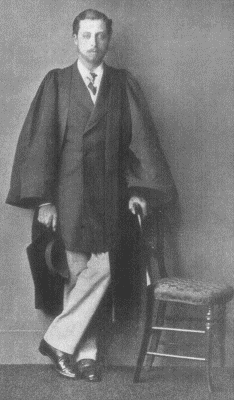
With the advent of Modernism, tastes changed, and his photography was forgotten from around 1920 until the 1960s.[citation needed]
Inventions
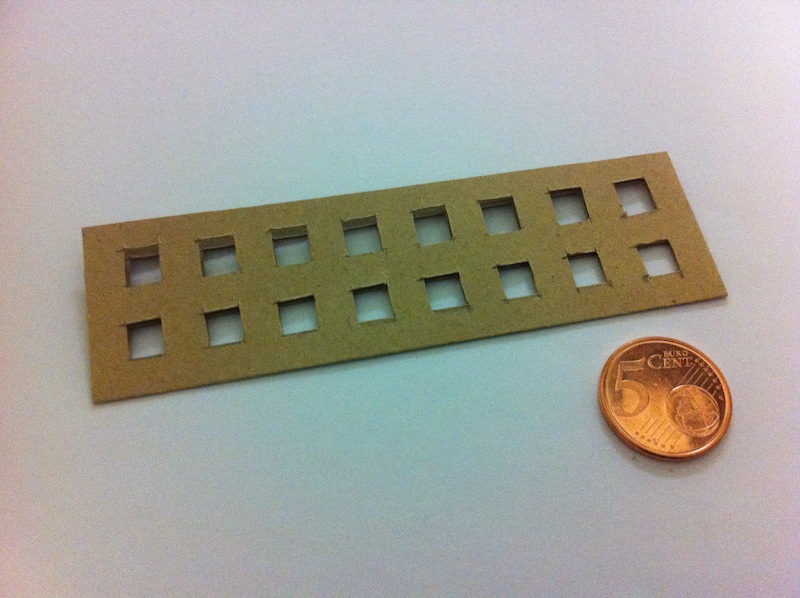
To promote letter writing, Dodgson invented The Wonderland Postage-Stamp Case in 1889. This was a cloth-backed folder with twelve slots, two marked for inserting the then most commonly used penny stamp, and one each for the other current denominations to one shilling. The folder was then put into a slip case decorated with a picture of Alice on the front and the Cheshire Cat on the back. All could be conveniently carried in a pocket or purse. When issued it also included a copy of Carroll's pamphletted lecture, Eight or Nine Wise Words About Letter-Writing.[46][47]

Another invention is a writing tablet called the nyctograph for use at night that allowed for note-taking in the dark; thus eliminating the trouble of getting out of bed and striking a light when one wakes with an idea. The device consisted of a gridded card with sixteen squares and system of symbols representing an alphabet of Dodgson's design, using letter shapes similar to the Graffiti writing system on a Palm device.
ABCDEFGHIJKLMNOPQRSTUVWXYZ A abcdefghijklmnopqrstuvwxyz A B bcdefghijklmnopqrstuvwxyza B C cdefghijklmnopqrstuvwxyzab C D defghijklmnopqrstuvwxyzabc D E efghijklmnopqrstuvwxyzabcd E F fghijklmnopqrstuvwxyzabcde F G ghijklmnopqrstuvwxyzabcdef G H hijklmnopqrstuvwxyzabcdefg H I ijklmnopqrstuvwxyzabcdefgh I J jklmnopqrstuvwxyzabcdefghi J K klmnopqrstuvwxyzabcdefghij K L lmnopqrstuvwxyzabcdefghijk L M mnopqrstuvwxyzabcdefghijkl M N nopqrstuvwxyzabcdefghijklm N O opqrstuvwxyzabcdefghijklmn O P pqrstuvwxyzabcdefghijklmno P Q qrstuvwxyzabcdefghijklmnop Q R rstuvwxyzabcdefghijklmnopq R S stuvwxyzabcdefghijklmnopqr S T tuvwxyzabcdefghijklmnopqrs T U uvwxyzabcdefghijklmnopqrst U V vwxyzabcdefghijklmnopqrstu V W wxyzabcdefghijklmnopqrstuv W X xyzabcdefghijklmnopqrstuvw X Y yzabcdefghijklmnopqrstuvwx Y Z zabcdefghijklmnopqrstuvwxy Z ABCDEFGHIJKLMNOPQRSTUVWXYZ
Among the games he devised outside of logic there are a number of word games, including an early version of what today is known as Scrabble. He also appears to have invented, or at least certainly popularised, the "doublet" (see word ladder), a form of brain-teaser that is still popular today: the game of changing one word into another by altering one letter at a time, each successive change always resulting in a genuine word. For instance, CAT is transformed into DOG by the following steps: CAT, COT, DOT, DOG.[26]

Other items include a rule for finding the day of the week for any date; a means for justifying right margins on a typewriter; a steering device for a velociam (a type of tricycle); new systems of parliamentary representation;[48] more nearly fair elimination rules for tennis tournaments; a new sort of postal money order; rules for reckoning postage; rules for a win in betting; rules for dividing a number by various divisors; a cardboard scale for the college common room he worked in later in life, which, held next to a glass, ensured the right amount of liqueur for the price paid; a double-sided adhesive strip for things like the fastening of envelopes or mounting things in books; a device for helping a bedridden invalid to read from a book placed sideways; and at least two ciphers for cryptography.[26]
Mathematical work
Within the academic discipline of mathematics, Dodgson worked primarily in the fields of geometry, matrix algebra, mathematical logic and recreational mathematics, producing nearly a dozen books under his real name. Dodgson also developed new ideas in the study of elections (e.g., Dodgson's method) and committees; some of this work was not published until well after his death. He worked as a mathematics tutor at Oxford, an occupation that gave him some financial security.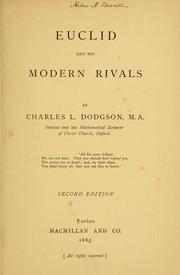
His mathematical work attracted renewed interest in the late 20th century. Robbins' and Rumsey's investigation[49] of Dodgson Condensation, a method of evaluating determinants, led them to the Alternating Sign Matrix conjecture, now a theorem.

Later years

Over the remaining twenty years of his life, throughout his growing wealth and fame, his existence remained little changed. He continued to teach at Christ Church until 1881, and remained in residence there until his death. His last novel, the two-volume Sylvie and Bruno, was published in 1889 and 1893 respectively. It achieved nowhere near the success of the Alice books. Its intricacy was apparently not appreciated by contemporary readers. The reviews and its sales, only 13,000 copies, were disappointing.[50][51]

The only occasion on which (as far as is known) he travelled abroad was a trip to Russia in 1867 as an ecclesiastical together with the Reverend Henry Liddon. He recounts the travel in his "Russian Journal", which was first commercially published in 1935.[52] On his way to Russia and back he also saw different cities in Belgium, Germany, the partitioned Poland, and France.
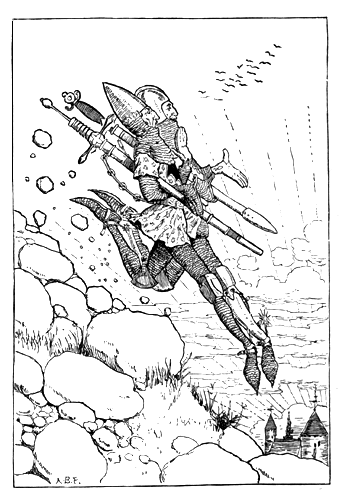
He died on 14 January 1898 at his sisters' home, "The Chestnuts" in Guildford, of pneumonia following influenza. He was two weeks away from turning 66 years old. He is buried in Guildford at the Mount Cemetery.[26]
Controversies and mysteries
Suggestions of paedophilia
Stuart Dodgson Collingwood (Dodgson's nephew and biographer) wrote:- And now as to the secondary causes which attracted him to children. First, I think children appealed to him because he was pre-eminently a teacher, and he saw in their unspoiled minds the best material for him to work upon. In later years one of his favourite recreations was to lecture at schools on logic; he used to give personal attention to each of his pupils, and one can well imagine with what eager anticipation the children would have looked forward to the visits of a schoolmaster who knew how to make even the dullest subjects interesting and amusing.[53]

Despite comments like this, Dodgson's friendships with young girls and psychological readings of his work – especially his photographs of nude or semi-nude girls[54] – have all led to speculation that he was a paedophile. This possibility has underpinned numerous modern interpretations of his life and work, particularly Dennis Potter's play Alice and his screenplay for the motion picture, Dreamchild, Robert Wilson's Alice, and a number of recent biographies, including Michael Bakewell's Lewis Carroll: A Biography (1996), Donald Thomas's Lewis Carroll: A Portrait with Background (1995), and Morton N. Cohen's Lewis Carroll: A Biography (1995). All of these works more or less unequivocally assume that Dodgson was a paedophile, albeit a repressed and celibate one. Cohen claims Dodgson's "sexual energies sought unconventional outlets", and further writes:
We cannot know to what extent sexual urges lay behind Charles's preference for drawing and photographing children in the nude. He contended the preference was entirely aesthetic. But given his emotional attachment to children as well as his aesthetic appreciation of their forms, his assertion that his interest was strictly artistic is naïve. He probably felt more than he dared acknowledge, even to himself.

Cohen notes that Dodgson "apparently convinced many of his friends that his attachment to the nude female child form was free of any eroticism", but adds that "later generations look beneath the surface" (p. 229).
Cohen and other biographers argue that Dodgson may have wanted to marry the 11-year-old Alice Liddell, and that this was the cause of the unexplained "break" with the family in June 1863.[55] There has never been significant evidence to support the idea, however, and the 1996 discovery of the "cut pages in diary document" (see above) seems to make it highly probable that the 1863 "break" had nothing to do with Alice, but was perhaps connected with rumours involving her older sister Lorina (born 11 May 1849, so she would have been 14 at the time), her governess, or her mother who was also nicknamed "Ina".

Some writers, e.g., Derek Hudson and Roger Lancelyn Green, stop short of identifying Dodgson as a paedophile, but concur that he had a passion for small female children and next to no interest in the adult world.

The basis for scholars' speculation regarding Dodgson's interest in female children has been challenged in the last ten years by several writers and scholars.

"Carroll Myth"

Since 1999 a group of scholars, notably Karoline Leach, Hugues Lebailly and Sherry L. Ackerman, John Tufail, Douglas Nickel and others, argue that what Leach terms the "Carroll Myth" has wildly distorted biographical perception of his life and his work. Those such as Carolyn Sigler and Cristopher Hollingsworth have joined the ranks of those calling for a major reassessment.[citation needed] Leach's book, In the Shadow of the Dreamchild, claims that:
- In general terms Dodgson's life has been simplified and 'infantilised' by a combination of inaccurate biography and the longstanding unavailability of key evidence, which allowed legends to proliferate unchecked.
- By the time the evidence did become available the 'mythic' image of the man had become so embedded in scholastic and popular thinking it remained unquestioned, despite the fact the evidence failed to support it.
- If the evidence were examined dispassionately it shows many of the most famous legends about the man (e.g. his 'paedophilia', and his exclusive adoration of small girls) are untrue, or at least grossly simplified.[56]

In more detail, Lebailly has endeavoured to set Dodgson's child-photography within the "Victorian Child Cult", which perceived child-nudity as essentially an expression of innocence. Lebailly claims that studies of child nudes were mainstream and fashionable in Dodgson's time and that most photographers, including Oscar Gustave Rejlander and Julia Margaret Cameron, made them as a matter of course. Lebailly continues that child nudes even appeared on Victorian Christmas cards, implying a very different social and aesthetic assessment of such material. Lebailly concludes that it has been an error of Dodgson's biographers to view his child-photography with 20th- or 21st-century eyes, and to have presented it as some form of personal idiosyncrasy, when it was in fact a response to a prevalent aesthetic and philosophical movement of the time.
Leach's reappraisal of Dodgson focused in particular on his controversial sexuality. She argues that the allegations of paedophilia rose initially from a misunderstanding of Victorian morals, as well as the mistaken idea, fostered by Dodgson's various biographers, that he had no interest in adult women. She termed the traditional image of Dodgson "the Carroll Myth".[57] She drew attention to the large amounts of evidence in his diaries and letters that he was also keenly interested in adult women, married and single, and enjoyed several scandalous (by the social standards of his time) relationships with them. She also pointed to the fact that many of those he described as "child-friends" were girls in their late teens and even twenties.[58] She argues that suggestions of paedophilia evolved only many years after his death, when his well-meaning family had suppressed all evidence of his relationships with women in an effort to preserve his reputation, thus giving a false impression of a man interested only in little girls. Similarly, Leach traces the claim that many of Carroll's female friendships ended when the girls reached the age of fourteen to a 1932 biography by Langford Reed.[59]

Ordination
Dodgson had been groomed for the ordained ministry in the Anglican Church from a very early age and was expected, as a condition of his residency at Christ Church, to take holy orders within four years of obtaining his master's degree. He delayed the process for some time but eventually took deacon's orders on 22 December 1861. But when the time came a year later to progress to priestly orders, Dodgson appealed to the dean for permission not to proceed. This was against college rules and initially Dean Liddell told him he would have to consult the college ruling body, which would almost undoubtedly have resulted in his being expelled. For unknown reasons, Dean Liddell changed his mind overnight and permitted Dodgson to remain at the college in defiance of the rules.[60] Uniquely amongst senior students of his time Dodgson never became a priest.
There is currently no conclusive evidence about why Dodgson rejected the priesthood. Some have suggested his stammer made him reluctant to take the step, because he was afraid of having to preach.[61] Wilson[62] quotes letters by Dodgson describing difficulty in reading lessons and prayers rather than preaching in his own words. But Dodgson did indeed preach in later life, even though not in priest's orders, so it seems unlikely his impediment was a major factor affecting his choice.[citation needed] Wilson also points out that the then Bishop of Oxford, Samuel Wilberforce, who ordained Dodgson, had strong views against clergy going to the theatre, one of Dodgson's great interests. Others have suggested that he was having serious doubts about Anglicanism.[citation needed] He was interested in minority forms of Christianity (he was an admirer of F.D. Maurice) and "alternative" religions (theosophy).[63] Dodgson became deeply troubled by an unexplained sense of sin and guilt at this time (the early 1860s) and frequently expressed the view in his diaries that he was a "vile and worthless" sinner, unworthy of the priesthood,[64] and this sense of sin and unworthiness may well have affected his decision to abandon being ordained to the priesthood.

Missing diaries

At least four complete volumes[65] and around seven pages[66] of text are missing from Dodgson's 13 diaries. The loss of the volumes remains unexplained; the pages have been deliberately removed by an unknown hand. Most scholars assume the diary material was removed by family members in the interests of preserving the family name, but this has not been proven.[67] Except for one page, the period of his diaries from which material is missing is between 1853 and 1863 (when Dodgson was 21–31 years old).[68][69] This was a period when Dodgson began suffering great mental and spiritual anguish and confessing to an overwhelming sense of his own sin. This was also the period of time when he composed his extensive love poetry, leading to speculation that the poems may have been autobiographical.[70][71]
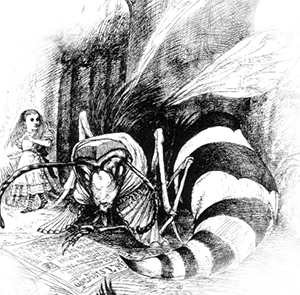
Many theories have been put forward to explain the missing material. A popular explanation for one particular missing page (27 June 1863) is that it might have been torn out to conceal a proposal of marriage on that day by Dodgson to the 11-year-old Alice Liddell; there has never been any evidence to suggest this was so, and a paper[72] discovered by Karoline Leach in the Dodgson family archive in 1996 offers some evidence to the contrary.
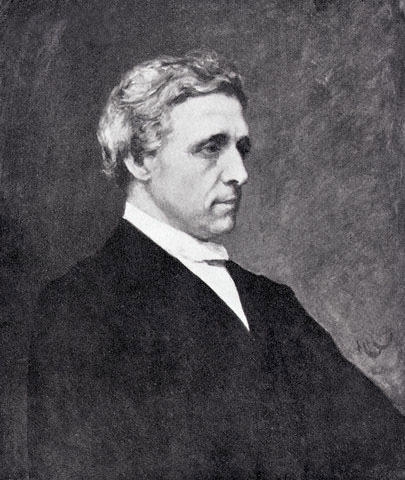
This paper, known as the "cut pages in diary document", was compiled by various members of Carroll's family after his death. Part of it may have been written at the time the pages were destroyed, though this is unclear. The document offers a brief summary of two diary pages that are now missing, including the one for 27 June 1863. The summary for this page states that Mrs. Liddell told Dodgson there was gossip circulating about him and the Liddell family's governess, as well as about his relationship with "Ina", presumably Alice's older sister, Lorina Liddell. The "break" with the Liddell family that occurred soon after was presumably in response to this gossip.[73][74] An alternative interpretation has been made regarding Carroll's rumoured involvement with "Ina": Lorina was also the name of Alice Liddell's mother. What is deemed most crucial and surprising is that the document seems to imply Dodgson's break with the family was not connected with Alice at all. But until a primary source is discovered, the events of 27 June 1863 remain inconclusive.

Migraine and epilepsy
In his diary for 1880, Dodgson recorded experiencing his first episode of migraine with aura, describing very accurately the process of 'moving fortifications' that are a manifestation of the aura stage of the syndrome.[75] Unfortunately there is no clear evidence to show whether this was his first experience of migraine per se, or if he may have previously suffered the far more common form of migraine without aura, although the latter seems most likely, given the fact that migraine most commonly develops in the teens or early adulthood.[76] Another form of migraine aura, Alice in Wonderland syndrome, has been named after Dodgson's little heroine, because its manifestation can resemble the sudden size-changes in the book. Also known as micropsia and macropsia, it is a brain condition affecting the way objects are perceived by the mind. For example, an afflicted person may look at a larger object, like a basketball, and perceive it as if it were the size of a golf ball. Some authors have suggested that Dodgson may have suffered from this type of aura, and used it as an inspiration in his work, but there is no evidence that he did.[76]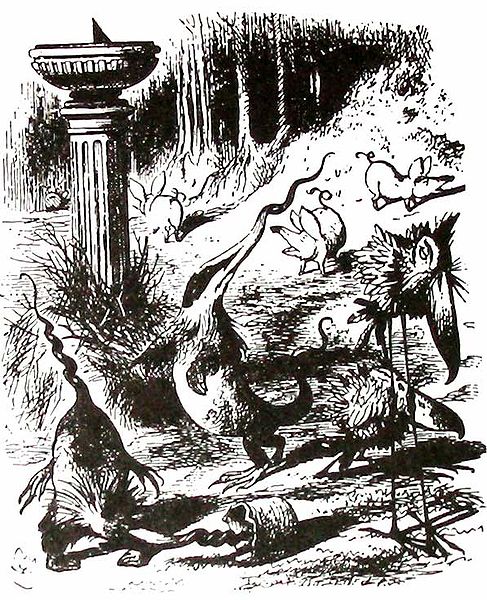
Dodgson also suffered two attacks in which he lost consciousness. He was diagnosed by three different doctors; a Dr. Morshead, Dr. Brooks, and Dr. Stedman, believed the attack and a consequent attack to be an "epileptiform" seizure (initially thought to be fainting, but Brooks changed his mind). Some have concluded from this he was a lifetime sufferer of this condition, but there is no evidence of this in his diaries beyond the diagnosis of the two attacks already mentioned.[77] Some authors, in particular Sadi Ranson, have suggested Carroll may have suffered from temporal lobe epilepsy in which consciousness is not always completely lost, but altered, and in which the symptoms mimic many of the same experiences as Alice in Wonderland. Carroll had at least one incidence in which he suffered full loss of consciousness and awoke with a bloody nose, which he recorded in his diary and noted that the episode left him not feeling himself for "quite sometime afterward". This attack was diagnosed as possibly "epileptiform" and Carroll himself later wrote of his "seizures" in the same diary.

Most of the standard diagnostic tests of today were not available in the nineteenth century. Recently, Dr Yvonne Hart, consultant neurologist at the Radcliffe Hospital, Oxford, considered Dodgson's symptoms. Her conclusion, quoted in Jenny Woolf's The Mystery of Lewis Carroll, is that Dodgson very likely had migraine, and may have had epilepsy, but she emphasises that she would have considerable doubt about making a diagnosis of epilepsy without further information.[78]
References
1. ^ "Dodgson, Charles Lutwidge". American Heritage Dictionary of the English Language. Houghton Mifflin. 2001.2. ^ "Dodgson, Charles Lutwidge". Random House Dictionary. Random House, Inc. 2011.
3. ^ http://lewiscarrollsociety.org.uk/pages/eventspeopleplaces/societies.html
4. ^ Clark (1979) p.10
5. ^ Collingwood, Stuart (1898). The Life and Letters of Lewis Carroll. London: T. Fisher Unwin. pp. 6–7.
6. ^ Collingwood, Stuart (1898). The Life and Letters of Lewis Carroll. London: T. Fisher Unwin. p. 8.
7. ^ a b Cohen, Morton (26 November 1996). Lewis Carroll: A Biography. Vintage Books. pp. 30–35. ISBN 978-0-679-74562-4.
8. ^ "Google map of Daresbury, UK". Retrieved 22 October 2011.
9. ^ "Charles Lutwidge Dodgson". The MacTutor History of Mathematics archive. Retrieved 8 March 2011.
10. ^ Cohen, Morton (26 November 1996). Lewis Carroll: A Biography. Vintage Books. pp. 200–202. ISBN 978-0-679-74562-4.
11. ^ Cohen (1995) p.4
12. ^ Collingwood, Stuart (1898). The Life and Letters of Lewis Carroll. London: T. Fisher Unwin. pp. 30–31.
13. ^ Collingwood, Stuart (1898). The Life and Letters of Lewis Carroll. London: T. Fisher Unwin. p. 29.
14. ^ Clark (1979) 63-64
15. ^ a b Clark (1979) 64-65
16. ^ Collingwood (1898) p.52
17. ^ Clark (1979) 74
18. ^ Collingwood (1898) p.57
19. ^ Cohen (1995) p.51
20. ^ Clark (1979) 79
21. ^ Raymond Flood; Adrian Rice; Robin Wilson (2011). Mathematics in Victorian Britain. Oxford University Press. p. 41. ISBN 0-19-960139-9. OCLC 721931689.
22. ^ Cohen (1995) pp.414-416
23. ^ a b Leach, Karoline In the Shadow of the Dreamchild Ch. 2.
24. ^ a b c d Leach, Karoline In the Shadow of the Dreamchild Ch. 2
25. ^ Leach, p. 91
26. ^ a b c d e f g h i j Cohen, Morton N. (26 November 1996). Lewis Carroll: A Biography. Vintage Books. pp. 100–4. ISBN 978-0-679-74562-4.[page needed]
27. ^ Gardner, Martin (2000). Introduction to The annotated Alice: Alice's adventures in Wonderland & Through the looking glass. W. W. Norton & Company. p. xv. ISBN 0-517-02962-6.
28. ^ Gardner, Martin (2009). Introduction to Alice's Adventures in Wonderland and Through the Looking-Glass. Oxford University Press. p. xvi. ISBN 0-517-02962-6.
29. ^ Leach, In the Shadow of the Dreamchild p. 147
30. ^ Jan Susina (2010). The place of Lewis Carroll in children's literature. Children's literature and culture 66. Taylor & Francis. p. 122. ISBN 0-415-93629-2.
31. ^ Carroll, Lewis, "What the Tortoise Said to Achilles", Mind n.s. 4 (1895), 278–280; rpt. in Mind 104 (1995), 691–693. Simon Blackburn, "Practical Tortoise Raising", Mind 104 (1995), 695 ff.[1]
32. ^ Peter L. Heath (2007), "Introduction", La Guida Di Bragia, a Balld Opera for the Marionette Theatre, Lewis Carroll Society of North America, pp. vii–xvi, ISBN 0-930326-15-6
33. ^ Cohen, Morton N. (ed), The Letters of Lewis Carroll, London: Macmillan, 1979.
34. ^ a b Leach, Karoline In the Shadow of the Dreamchild Ch. 5 "The Unreal Alice"
35. ^ a b Simon Winchester (2011). The Alice Behind Wonderland. Oxford University Press. ISBN 978-0-19-539619-5. OCLC 641525313.
36. ^ a b Leach, Karoline In the Shadow of the Dream Child Ch. 4
37. ^ Wilson (2008)
38. ^ a b "Lewis Carroll – Logician, Nonsense Writer, Mathematician and Photographer". The Hitchhiker's Guide to the Galaxy. BBC. 26 August 2005. Retrieved 12 February 2009.
39. ^ Dodgson, Charles (1896). Symbolic Logic.
40. ^ T. B. Strong (27 January 1932). "Mr. Dodgson: Lewis Carroll at Oxford". [The Times].
41. ^ "Fit for a Queen". Snopes.
42. ^ Cohen, Morton (24 June 2009). Introduction to "Alice in Wonderland and Through the Looking-Glass". Random House. ISBN 978-0-553-21345-4.
43. ^ Clark (1979) p.93
44. ^ Taylor, Roger; Wakeling, Edward (25 February 2002). Lewis Carroll, Photographer. Princeton University Press. ISBN 978-0-691-07443-6.
45. ^ Wakeling, Edward (1998), "Lewis Carroll's Photography", An Exhibition From the Jon A. Lindseth Collection of C. L. Dodgson and Lewis Carroll, New York, NY: The Grolier Club, pp. 55–67, ISBN 0-910672-23-7
46. ^ Flodden W. Heron, "Lewis Carroll, Inventor of Postage Stamp Case" in Stamps, vol. 26, no. 12, 25 March 1939
47. ^ "The Lewis Carroll Society Website – Carroll Related Stamps". The Lewis Carroll Society. 28 April 2005. Retrieved 10 March 2011.
48. ^ Black, Duncan; McLean, Iain; McMillan, Alistair; Monroe, Burt L.; Dodgson, Charles Lutwidge (1996). A Mathematical Approach to Proportional Representation. ISBN 978-0-7923-9620-8.
49. ^ David P Robbins and Howard Rumsey Jr., "Determinants and alternating sign matrices", Advances in Mathematics, 62, Issue 2 (1986), 169–184.
50. ^ Angelica Shirley Carpenter (2002). Lewis Carroll: Through the Looking Glass. Lerner. p. 98.ISBN 978-0822500735.
51. ^ Thomas Christensen (1991). "Dodgson's Dodges". rightreading.com.
52. ^ Chronology of Works of Lewis Carroll[dead link]
53. ^ Stuart Dodgson Collingwood (1898). [/books?id=15-aAAAAIAAJ&printsec=frontcover The Life and Letters of Lewis Carroll] Check |url= scheme (help). London: T. Fisher Unwin.
54. ^ Cohen, Morton N. (26 November 1996). Lewis Carroll: A Biography. Vintage Books. pp. 166–167, 254–255. ISBN 978-0-679-74562-4.
55. ^ Cohen, Morton N. (26 November 1996). Lewis Carroll: A Biography. Vintage Books. pp. 100–4. ISBN 978-0-679-74562-4.
56. ^ http://carrollmyth.com/faq.html
57. ^ "The Carroll Myth". Retrieved 12 February 2009.
58. ^ Leach, pp. 16–17
59. ^ Leach, p. 33
60. ^ Dodgson's MS diaries, volume 8, 22–24 October 1862
61. ^ Cohen, Morton N. (26 November 1996). Lewis Carroll: A Biography. Vintage Books. p. 263. ISBN 978-0-679-74562-4.
62. ^ Wilson (2008) pp.103-104
63. ^ Leach, In the Shadow of the Dreamchild (new edition), 2009, p. 134
64. ^ Dodgson's MS diaries, volume 8, see prayers scattered throughout the text
65. ^ Leach, p. 48
66. ^ Leach, p. 51
67. ^ Leach, pp. 48–51
68. ^ Leach, p. 52
69. ^ Wakeling, Edward (April 2003). "The Real Lewis Carroll / A Talk given to the Lewis Carroll Society". 1855 ... 1856 ... 1857 ... 1858 ... 1862 ... 1863. Retrieved 14 September 2009.
70. ^ Leach p. 54
71. ^ "The Dodgson Family and Their Legacy". Retrieved 5 January 2011.
72. ^ Dodgson Family Collection, Cat. No. F/17/1. "Cut Pages in Diary[dead link]". (For an account of its discovery see The Times Literary Supplement, 3 May 1996.)
73. ^ Leach, Karoline In the Shadow of the Dreamchild pp. 170–2.
74. ^ "Text available on-line". Looking for Lewis Carroll. Retrieved 4 May 2007.[dead link]
75. ^ Wakeling, Edward [2] (Ed.) "The Diaries of Lewis Carroll", vol 9 p. 52
76. ^ a b "Migraine and Lewis Carroll"; FW Maudie, in The Migraine Periodical,<issue 17>
77. ^ "The Diaries of Lewis Carroll", vol 9
78. ^ Woolf, Jenny (4 February 2010). The Mystery of Lewis Carroll. St. Martin's Press. pp. 298–9. ISBN 978-0-312-61298-6.
79. ^ "‘A most curious thing’ / Lewis Carroll Library".
Taken from: https://en.wikipedia.org/wiki/Lewis_Carroll [04.07.2013]

.jpg)




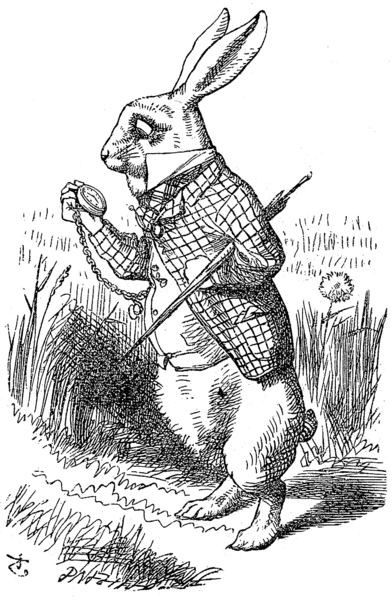





MYOB online help by the best assignment expert confirms A+ grade in all your MYOB assignments.Myob online help Writers are always accessible round the clock. Our team is our pride and we admit our victory to them. Our experts are highly prepared scholars and a team of more than +15 Ph.D. professors.
ReplyDeleteHelp For Assignment
ReplyDeleteDo you need any help with your assignments? The best assignment expert is all agog for your assistance. We are now operating everywhere for every student to aid them in their school, college, and university assignments and homework. Help For Assignment With our help, you are bound to get 90% on your assignments.
Nice post. I used to be checking constantly this blog and I am impressed! Extremely useful info particularly the ultimate section 🙂 I take care of such information a lot. I was seeking this certain information for a long time. Thank you and best of luck.
ReplyDeleteEssay on ecosystem restoration
طراحی سایت لوازم یدکی
ReplyDeleteطراحی سایت ارز دیجیتال
google 217
ReplyDeletegoogle 218
google 219
google 220
google 221
This explanation was such a game changer for me! The writer took something that I’d always found confusing and explained it in a way that was easy to digest. I’m really grateful for how straightforward and insightful it was. Big kudos for making such a tricky topic finally feel approachable! Visit our link for ISO Certification in Saudi Arabia
ReplyDelete